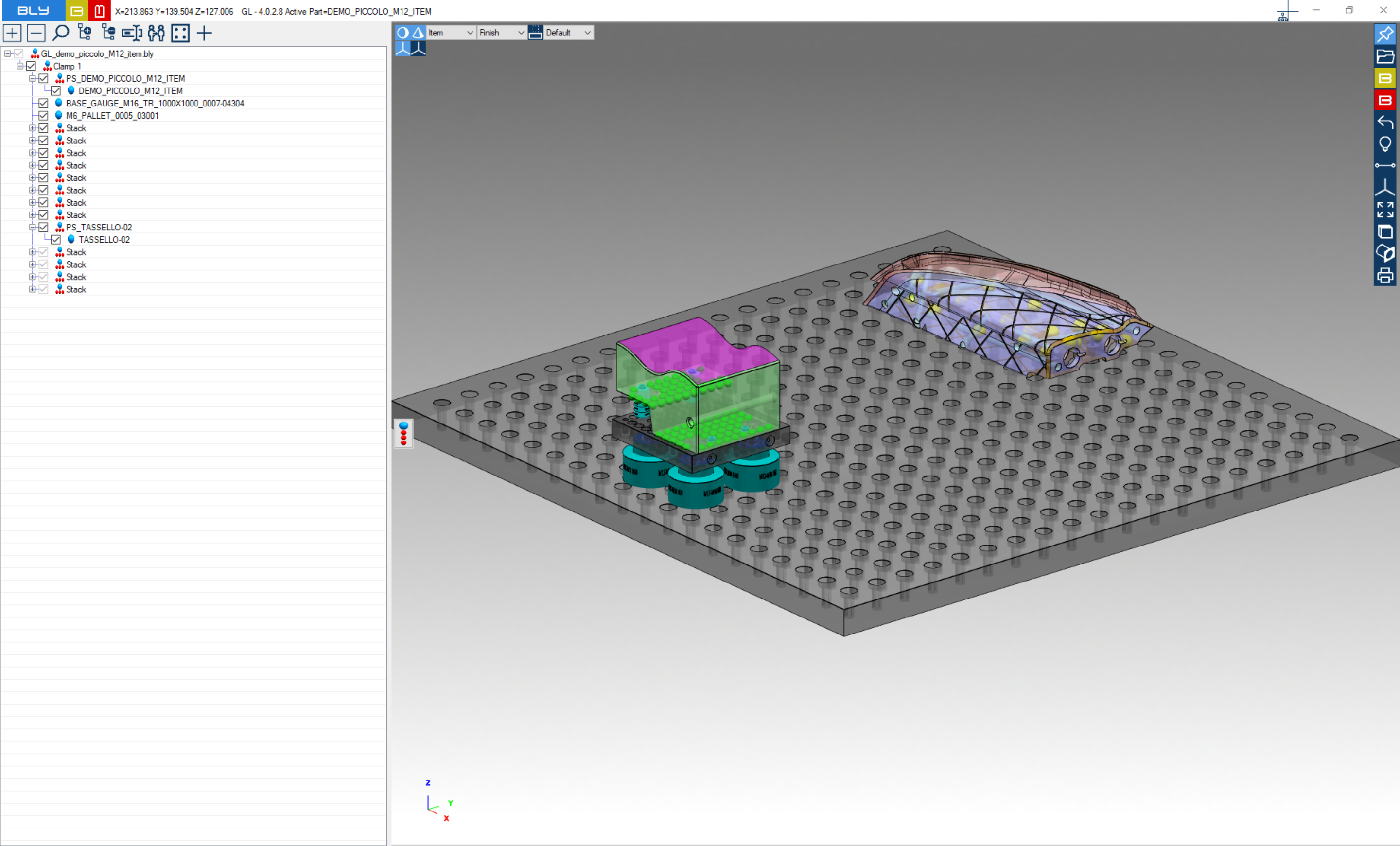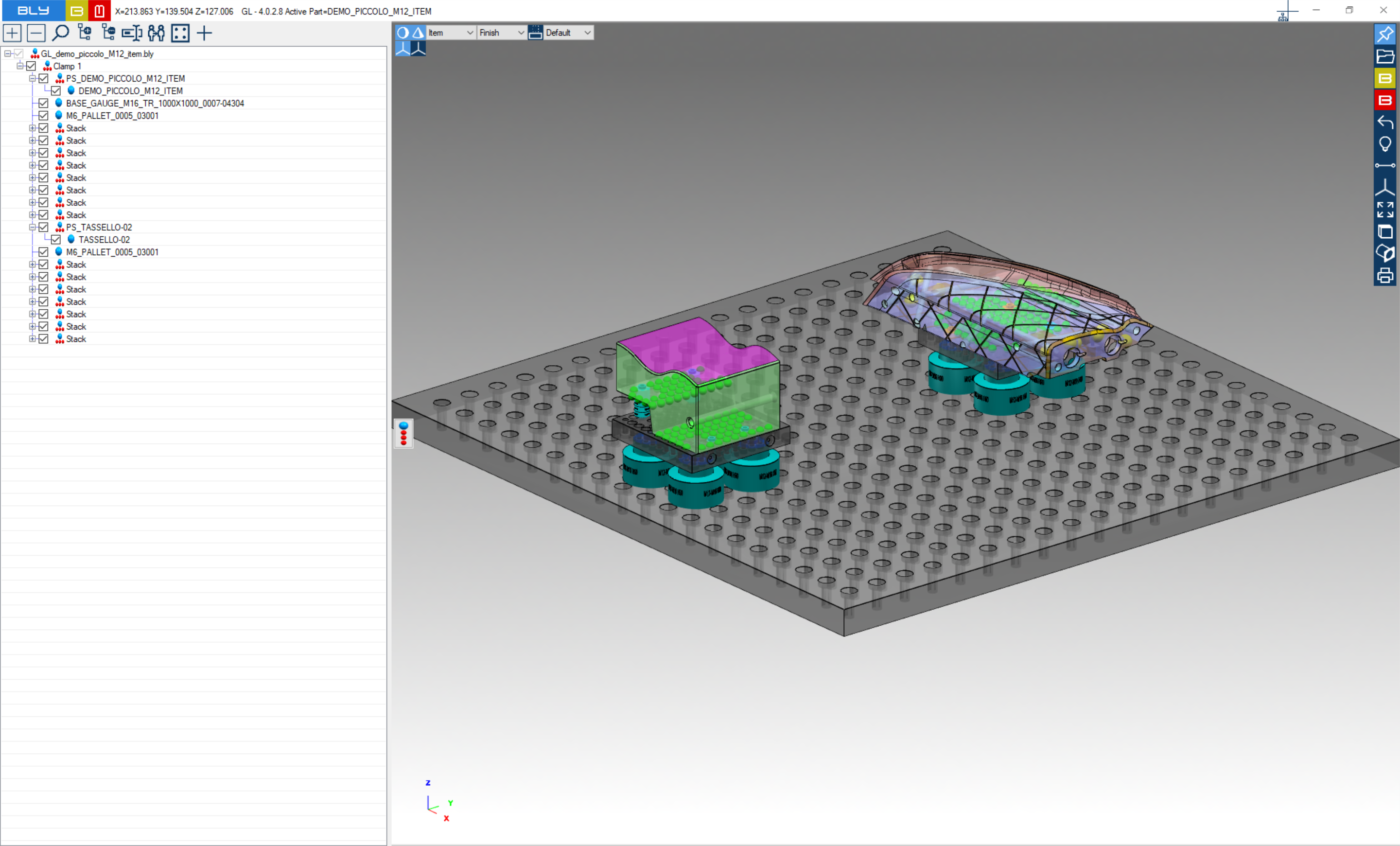PHASE 1: Multi-Components Clamp
Guideline supports multi-component clamps also. There is a variety of possible combinations while clamping more than one job at the same time: in this chapter we will go through the cases related to the Phase 1, when FCS seats are yet to be defined, analysing the possible implication of each one.
General procedure for adding another workpiece is to press "Add New Piece To Clamp" in the tree toolbar with a component loaded.
Guideline will access the file system and ask to select a component to add, which can be another instance of an workpiece present already or a different job.

Additional job will be added to the active clamp: if more than one clamp is present, Guideline will ask if add the job to all of them or to the active one only
"Yes" will add the piece to every clamping, "No" will add it in the acive clamp only
Adding another instance of an inserted workpiece
Adding another instance will place the same job into the same original position as the one present: if the first instance has not been moved/clamped yet, the will overlap. The istance is added to the tree and can be detected/selected there to further operations


As alternative, a second instance can be added pressing CTRL button on PC's keyboard while dragging the workpiece.
Although possible and theoretically useful in certain occurences, adding multiple istances to a clamp in Phase 1 (seats creation) is an operation that must be carefully considered: since all istances refer to the same job, all the clamping component will have an impact on the job, which can make the input a little difficult to manage.
It is much more common to add multiple istances in Phase 2, when defining machine setups (see PHASE 2: Multi-Components Clamp)
Adding a different workpiece
To add a different job to the clamp is a much more common occurrence, particularly for small parts that are machined together (maybe from a single raw block). Clamping them together gives an immediate feedback on their positioning, which can be useful both to machinist and designers in order to find the best solution.


See also the related video